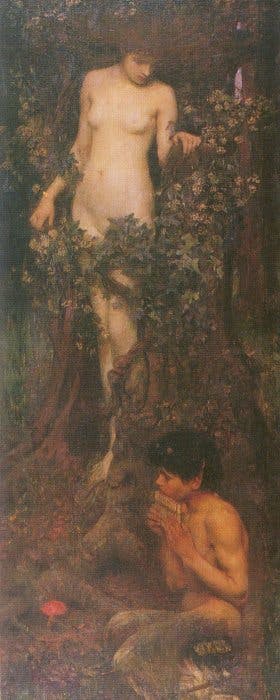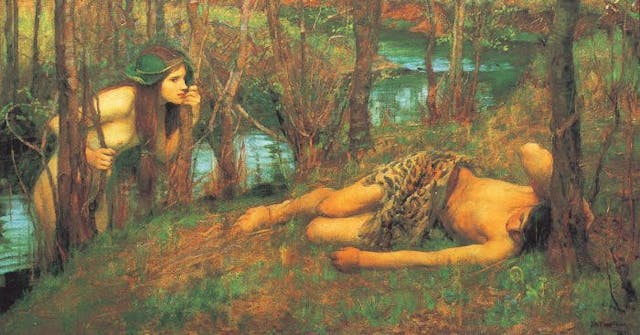A Hamadryad

Date created: 1893
Exhibited at the Royal Academy in 1893 (No. 98). Its entry in Academy Notesof 1893 reads:
"Originally intended for a decorative panel. A little goat-legged satyr has unconsciously charmed a wood-nymph from the ivy-girt bole of an oak tree by the music of his Pan-pipes."
Another reviewer from 1893 wrote: "J.W. Waterhouse's Hamadryad is a graceful figure hiding within the hollow trunk of an ivied oak and listening with rapt attention to a pipe played by a satyr crouched near the tree."
In Greek mythology, nymphs were any of a large class of inferior female divinities. The nymphs were usually associated with fertile, growing things, such as trees, or with water. They were not immortal but were extremely long-lived and were on the whole kindly disposed toward men. They were distinguished according to the sphere of nature with which they were connected. The Oceanids, for example, were sea nymphs; the Nereids inhabited both saltwater and freshwater; the Naiads presided over springs, rivers, and lakes. The Oreads (oros, "mountain") were nymphs of mountains and grottoes; the Napaeae (nape, "dell") and the Alseids (alsos, "grove") were nymphs of glens and groves; the Dryads or Hamadryads presided over forests and trees.
Source: Encyclopedia Britannica
